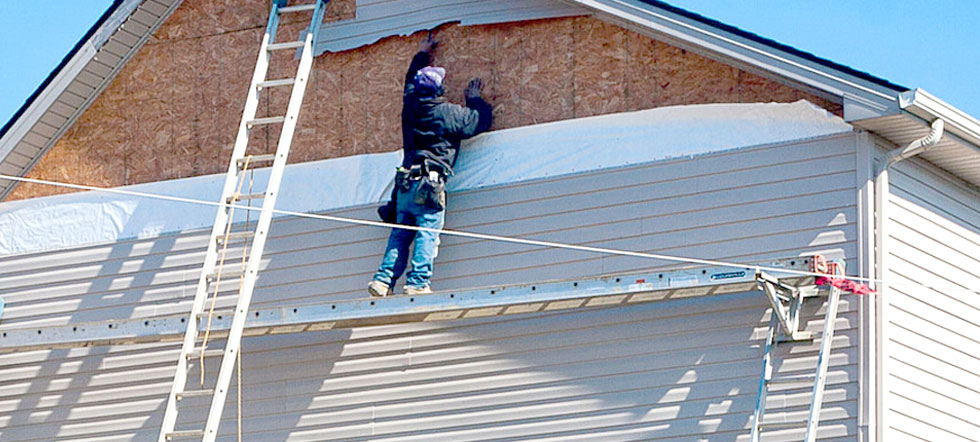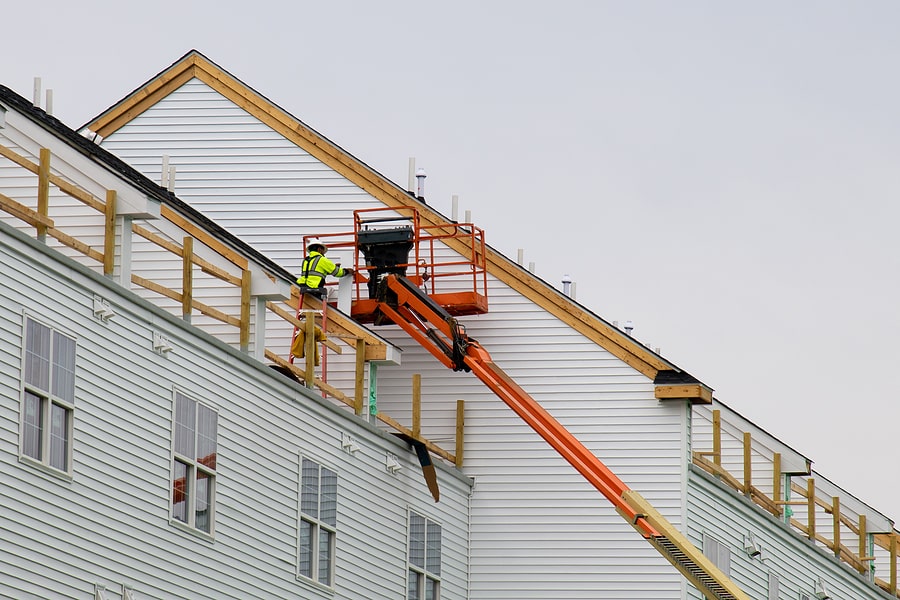Morris Siding Contractor Providing Energy-Efficient Home Exterior Installations
Morris Siding Contractor Providing Energy-Efficient Home Exterior Installations
Blog Article
The Important Overview to the Different Types of Exterior Siding and Their Distinct Benefits
In the realm of home renovation, selecting the best siding is a critical decision that affects both aesthetic appeal and functional performance. With so numerous choices to consider, which exterior siding material genuinely stands out for your certain project?
Wood Siding
Timber home siding, a prominent choice for residential exteriors, provides a classic aesthetic that combines natural elegance with structural stability. This exterior siding material is readily available in various styles, including clapboard, roof shingles, and board-and-batten, permitting property owners to personalize their appearance to match their style choices. Timber exterior siding is generally crafted from long lasting species such as cedar, redwood, or yearn, which are known for their strength and capacity to stand up to environmental stressors.
One of the primary benefits of timber exterior siding is its excellent insulation homes, which can add to energy effectiveness and lower home heating costs. Furthermore, wood exterior siding is eco-friendly, making it an eco friendly alternative when sourced sustainably. Routine upkeep, including paint or staining, can lengthen its life-span and boost its look, enabling property owners to protect the all-natural beauty of the wood.
Nonetheless, possible downsides include susceptibility to bugs, rot, and climate damage, demanding adequate treatment and upkeep - morris siding contractor. Despite these issues, when appropriately cared for, timber house siding can supply a resilient and lovely solution that enhances the character of a home while providing a cozy, inviting atmosphere

Vinyl Home Siding
Vinyl home siding has emerged as a leading choice for homeowners looking for a low-maintenance outside choice that integrates longevity and price. This functional product is crafted from polyvinyl chloride (PVC), making it immune to various weather, including moisture and UV rays. As an outcome, plastic siding does not warp, rot, or discolor, making certain durable aesthetic appeal.
Among the primary benefits of vinyl house siding is its considerable array of colors and designs, enabling house owners to attain the preferred try to find their residential property without the need for regular repainting. In addition, vinyl house siding is simple to mount, which can substantially decrease labor prices throughout building or improvement projects.
Plastic home siding additionally adds to power effectiveness. Numerous options function insulation backing, which boosts thermal efficiency, helping to keep comfy indoor temperature levels and possibly lowering power bills. Furthermore, its smooth surface promotes simple cleaning, calling for just routine cleaning with a yard hose to eliminate dirt and debris.
Fiber Concrete House Siding
Fiber concrete home siding has actually gotten grip among property owners and home builders alike because of its impressive mix of sturdiness and aesthetic adaptability. Composed of a blend of cement, sand, and cellulose fibers, this house siding choice is crafted to withstand extreme weather problems, including high winds, heavy rain, and temperature level variations, making it a long-lasting option for property outsides.

Among the main advantages of fiber cement home siding is its resistance to bugs, such as termites, and its non-combustible nature, offering improved fire security. morris siding contractor. Additionally, it is view website readily available in a vast range of appearances, designs, and shades, permitting property owners to achieve their preferred aesthetic without compromising performance
Another advantage is its reduced maintenance requirements; fiber cement house siding commonly needs painting or discoloration every 5-10 years, which is much less constant than other materials. Its durability contributes to a lower general expense of possession, as it reduces the demand for constant repair services or substitutes.
Inevitably, fiber cement home siding stands for an outstanding investment for those looking for a resilient, eye-catching, and functional exterior option, combining both form and function to enhance the home's aesthetic allure.
Steel Home Siding
The attraction of steel siding depends on its durable resilience and modern aesthetic appeal, making it a preferred choice for contemporary architecture. Available in products such as light weight aluminum and steel, metal house siding offers a variety of finishes and colors, enabling house owners to achieve a personalized look that complements their design vision.

Energy efficiency is another substantial advantage, as numerous steel home siding items are created with insulation alternatives that assist control indoor temperatures. This can lead to reduced energy prices in time. Additionally, metal house siding is typically recyclable, making it an eco-friendly choice for sustainability-minded homeowners.
The installation procedure for steel house siding can be reasonably straightforward, leading to a quicker turn-around time for construction projects. Overall, steel siding integrates performance and design, making it a practical choice for those seeking a enduring and visually enticing exterior surface.
Brick and Stone Siding
Brick and rock siding attracts attention as a classic option that boosts the aesthetic charm of any type of home. Understood for their sturdiness and reduced maintenance, these products offer a phenomenal roi while raising the check my blog residential or commercial property's aesthetic charm. Available in numerous shades, structures, and patterns, block and rock can be customized to suit varied architectural designs, from traditional to contemporary.
One of the main benefits of block and stone house siding is their power efficiency. Both products have natural shielding residential properties that help control indoor temperatures, potentially minimizing heating & cooling expenses. Furthermore, they supply premium fire resistance contrasted to other siding choices, adding to improved safety and security.
An additional benefit is their durability. Brick and rock can last for years, typically needing very little upkeep past occasional cleaning. Unlike timber siding, they are resistant to bugs and rot, guaranteeing a lasting outside that stands up to the components.
Verdict
In summary, the selection of siding substantially impacts a home's visual allure, power performance, and maintenance demands. Each kind of house siding-- whether wood, plastic, fiber steel, brick, or cement and stone-- uses unique advantages customized to numerous house owner preferences and environmental problems.
One of the key advantages of timber siding is its outstanding insulation residential or commercial properties, which you could look here can contribute to power efficiency and lower heating prices. Furthermore, timber exterior siding is naturally degradable, making it an eco pleasant choice when sourced sustainably.One of the primary benefits of metal house siding is its resistance to numerous ecological factors.Energy efficiency is one more significant benefit, as numerous steel siding products are made with insulation options that assist regulate interior temperature levels. Each type of home siding-- whether wood, vinyl, fiber steel, block, or concrete and rock-- offers unique benefits tailored to different house owner choices and environmental problems.
Report this page